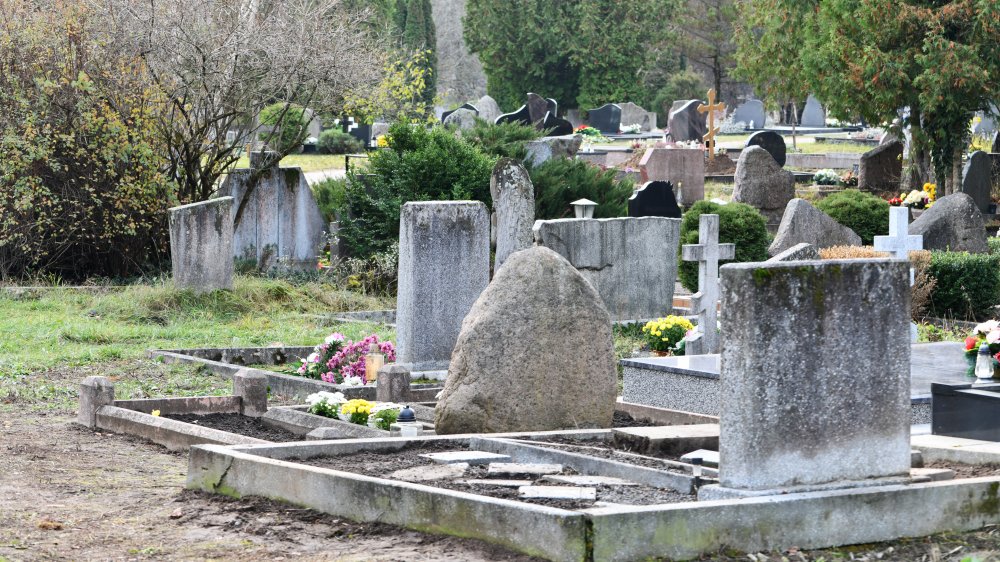What You Don't Know About The New England Vampire Panic
When you think of vampires, do you envision them stalking down a dark alley in England, or hiding away in an Eastern European castle? Or, perhaps, do you picture vampires frolicking about the picturesque cities of New England, amidst its mountains and gorgeous coastlines?
Yep, New Englanders once genuinely believed that vampires were among them, thanks to mass hysteria, a misunderstanding of disease, and the New England Vampire Panic of the 19th century. What happened, back then, was that an outbreak of tuberculosis caused farmers in various New England towns to believe that these undead bloodsuckers were somehow roaming around. Smithsonian Magazine writes the farmers believed tuberculosis only occurred because sufferers were draining the life from family members. When they died, their remains were exhumed, and their organs inspected: if these organs were unusually fresh, they determined that, of course, this dead person was sucking the life from others. Proof of a vampire!
There were a few ways to fully kill the vampire, it was believed. One was to simply turn the body around. The more gory approach was to take out the organs, burn the body, and make family members inhale their ashes, to "cure" them, according to How Stuff Works.
These vampires did not glitter
There were several waves of panic throughout New England in the 19th century, with many of the disturbed graves making news. Smithsonian Magazine reports exhumations related to vampires can be traced to as far back as the 1700s, to places as far west as Maine, but most of the New England vampire hysteria happened in the 1800s.
Exhumations were common knowledge. Henry David Thoreau mentions one in Vermont, in his journal. One of the most famous incidents was what befell the body of Mercy Lena Brown, per How Stuff Works: she, her mother, and her sister had succumbed to tuberculosis in 1892, when their brother, Edwin, also got sick. Mercy's grave was exhumed, and since her organs were fresh (due to the recentness of her burial, and preservation from cold temperatures) she was pronounced a vampire, and the villagers cut her heart out. Despite this effort, Edwin still died, since all these vampire myths (and "cures") weren't real. Today, the foremost archaeological evidence of these exhumations is the remains of John Barber, the so-called 19th century Connecticut Vampire. Following all this hubbub, History writes that such stories may have inspired the novelist Bram Stoker, since Dracula was published in 1897, and featured vampires rising from their graves to prowl the night.
So, while vampires didn't exist, people used to be genuinely terrified of them. And, when you think of it, New England is as good a place as any for brooding creatures of the night.

